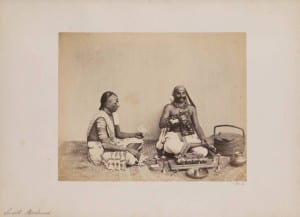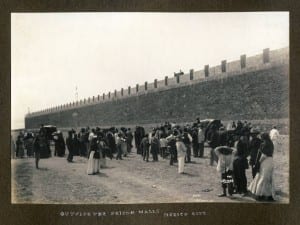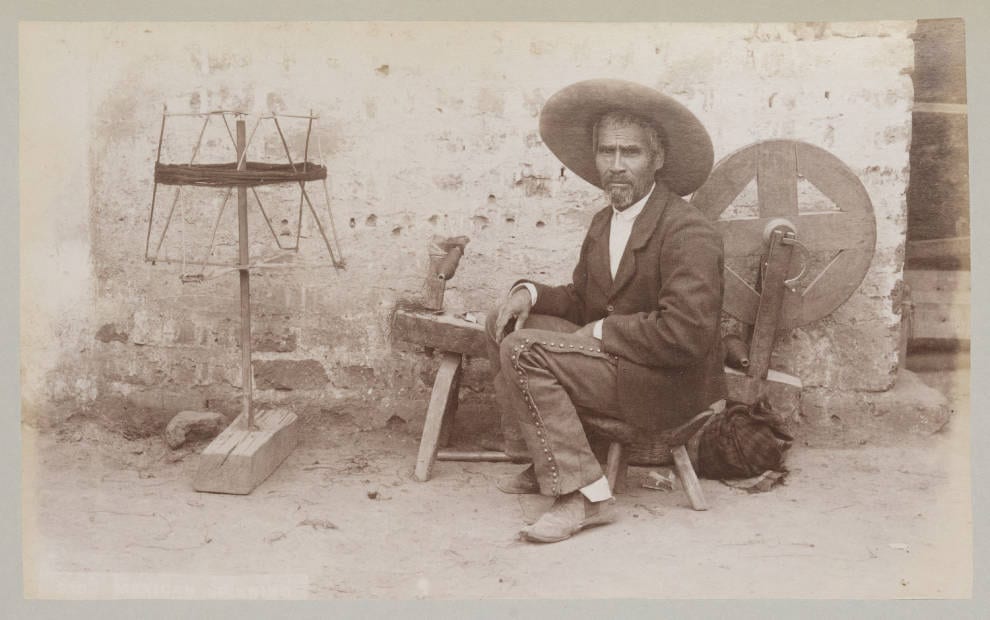October 29, 2015
by Chrissie Phillips
0 comments

http://digitalcollections.smu.edu/cdm/ref/collection/eaa/id/711
William Johnson takes this photograph to visually reflect the different status and lifestyles of Indians in the mid 1800s. He uses the contradictory paring of a minimal background and elaborate foreground to represent the Smarth Brahmins’ culture. The fact that he photographs these two men behind what seems to be a white wall and sitting on a thin covering shows the simple, religious aspect of Smarth tradition. These Brahmins choose one of the five deities to be the central focus and the other four surround that deity. This simplicity in how they practice their religion coincides with the simplicity of the background. Furthermore, Johnson made the two Brahmins the center of the photo that shows how they centralize one deity in their worship. Although he keeps the background very simple, Johnson fill foreground of the photo with many items that reflect the wealth associated with the Brahmins. The men are dressed and painted very elaborately and have many nice items in front of them. There are books and many metal works that seem to be well finished. All these items were only available to the higher castes because of the wealth needed to obtain them. Moreover, Brahmins were usually well educated compared to other castes, which is symbolized through the books present in the photo. Although the photo is titled “Smarth Brahmins,” one can conclude that the two men are Smarth Brahmins through the use of a simple background and the items present in front of the men.

http://digitalcollections.smu.edu/cdm/ref/collection/mex/id/135
Similarly to William Johnson, Manuel Ramos takes this photograph to visually reflect a lesser class in Mexico City through use of the location and amount of people. Prisons have a negative connotation in people’s minds because of why and who is sent there. Our society views prison as a place where bad people who did bad things are forced to go. Thus, we view the people who are in prison or around the prison as bad people, which causes us to view them as inferiors, instead of equals. Since Ramos took the photo of a large amount of people outside a prison, we unconsciously transfer that negative connotation onto the people in the photograph. Furthermore, the majority is dressed in dark clothing. This is significant because just like how we relate prisons to bad things, we associate dark clothing to bad things as well. Throughout time, we connect ideas of good and purity to the color white and ideas of bad and immorality with the color black. So by Ramos capturing such a large crowd of people in darker colors outside of a prison, he’s able to project the ideals of wrongness and immorality onto the crowd. In addition to the dark clothing and location where the photo was captured, all the people are facing the wall. This alludes to the possibility of the people waiting for someone or something. Since the photo was taken during the Mexican Revolution, this holds a lot of symbolic meaning in terms of change for the country. With everyone in the photo facing the wall of oppression directly shows the acknowledgment of that oppression (the colonizer) and the need for independence.



